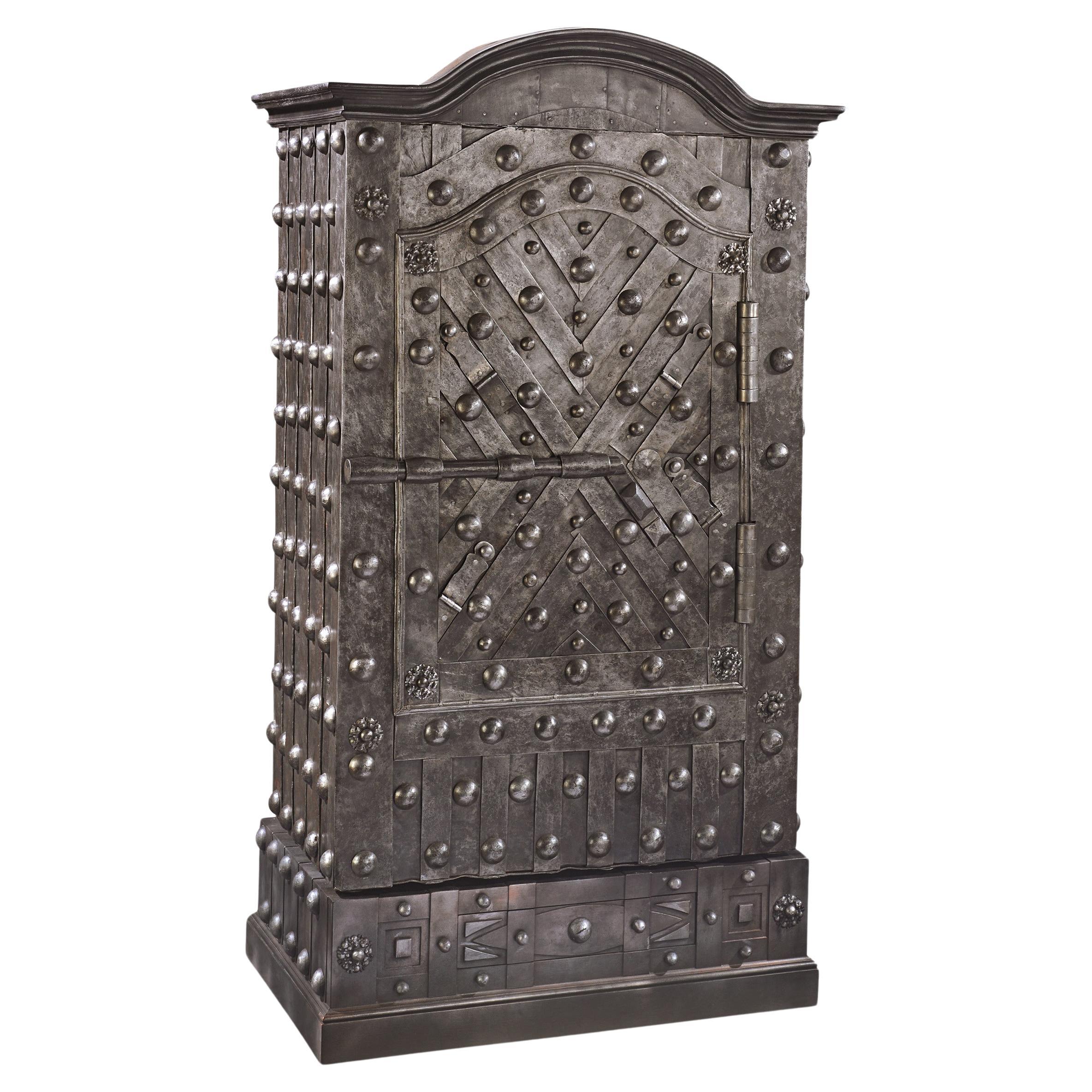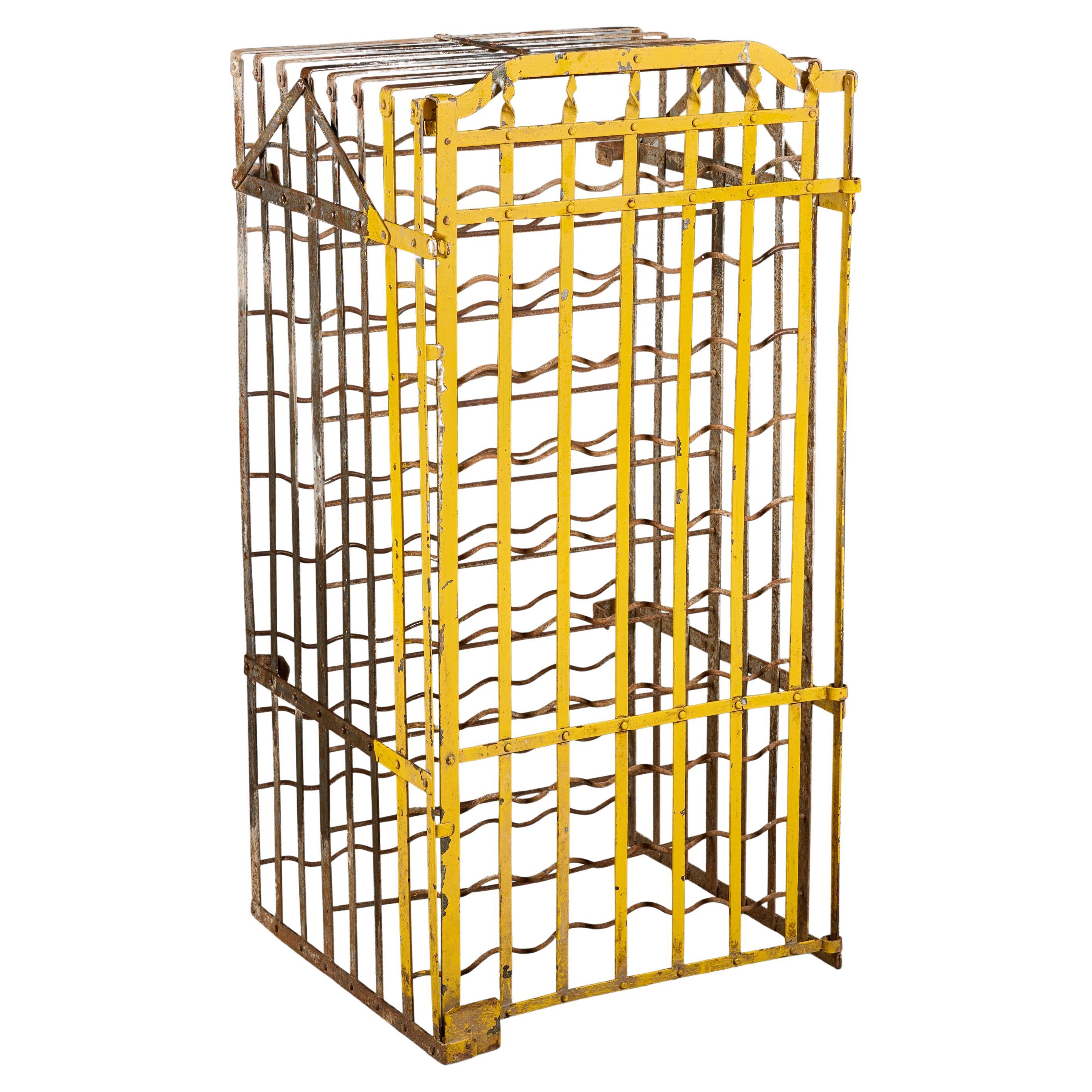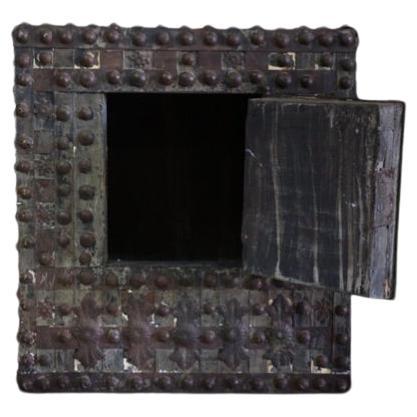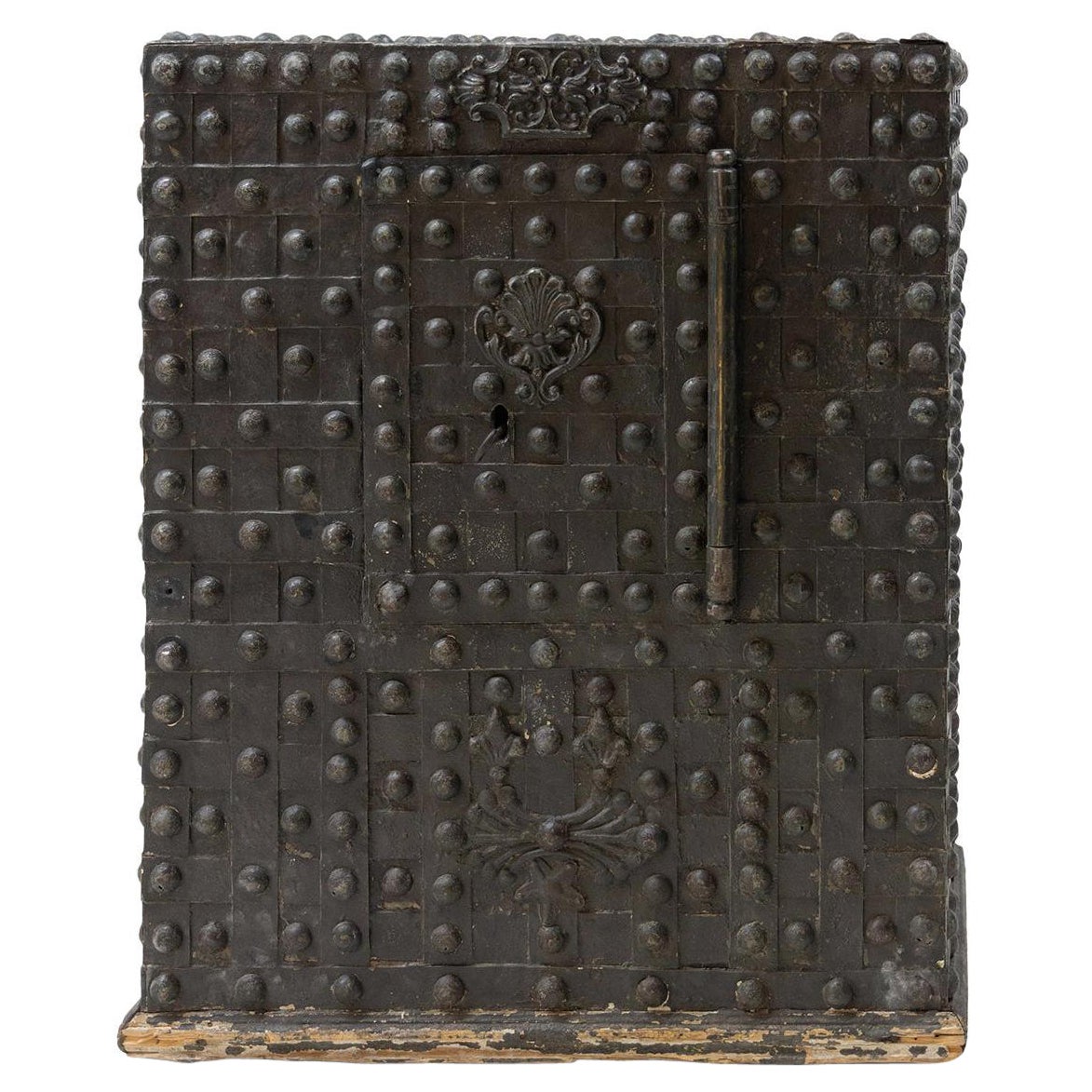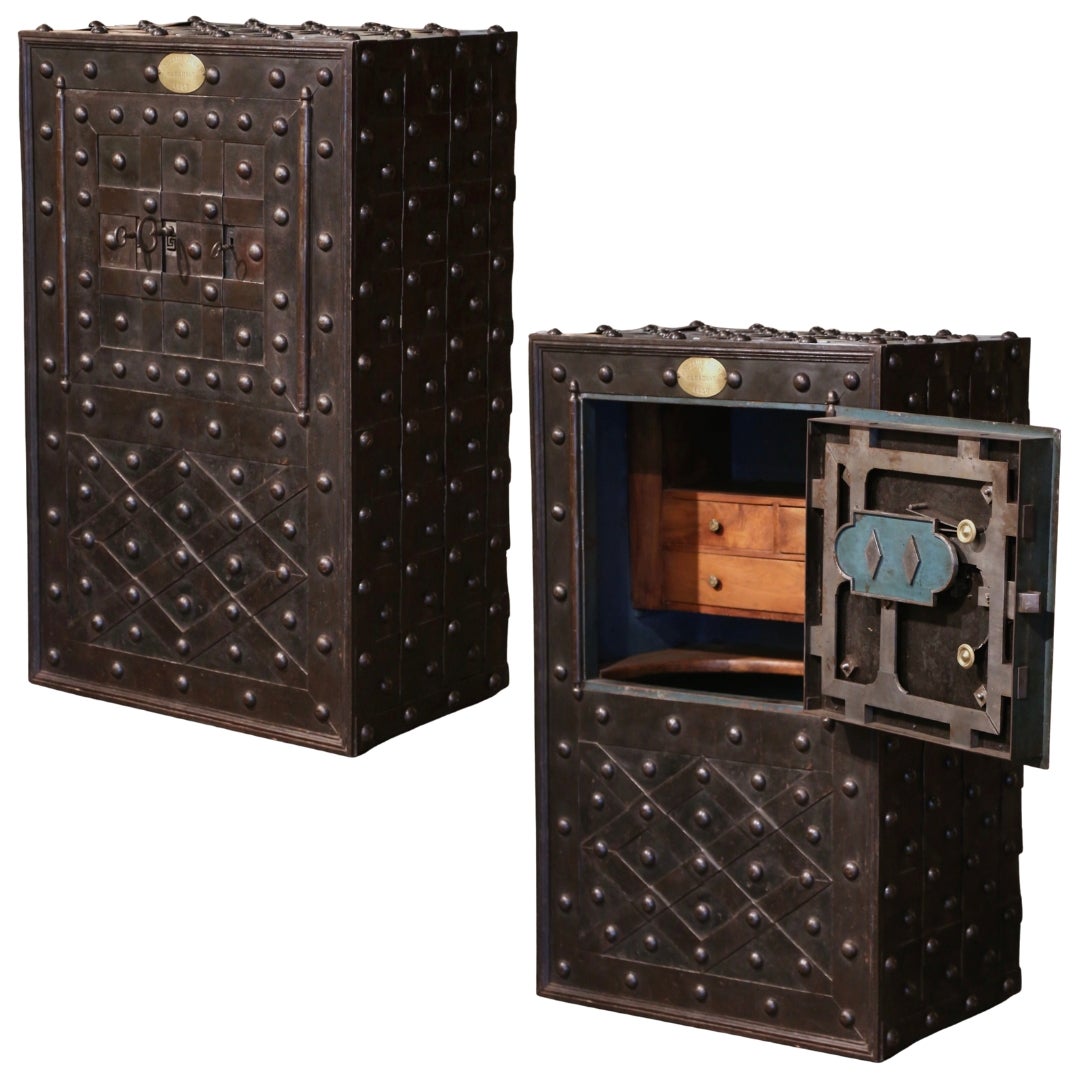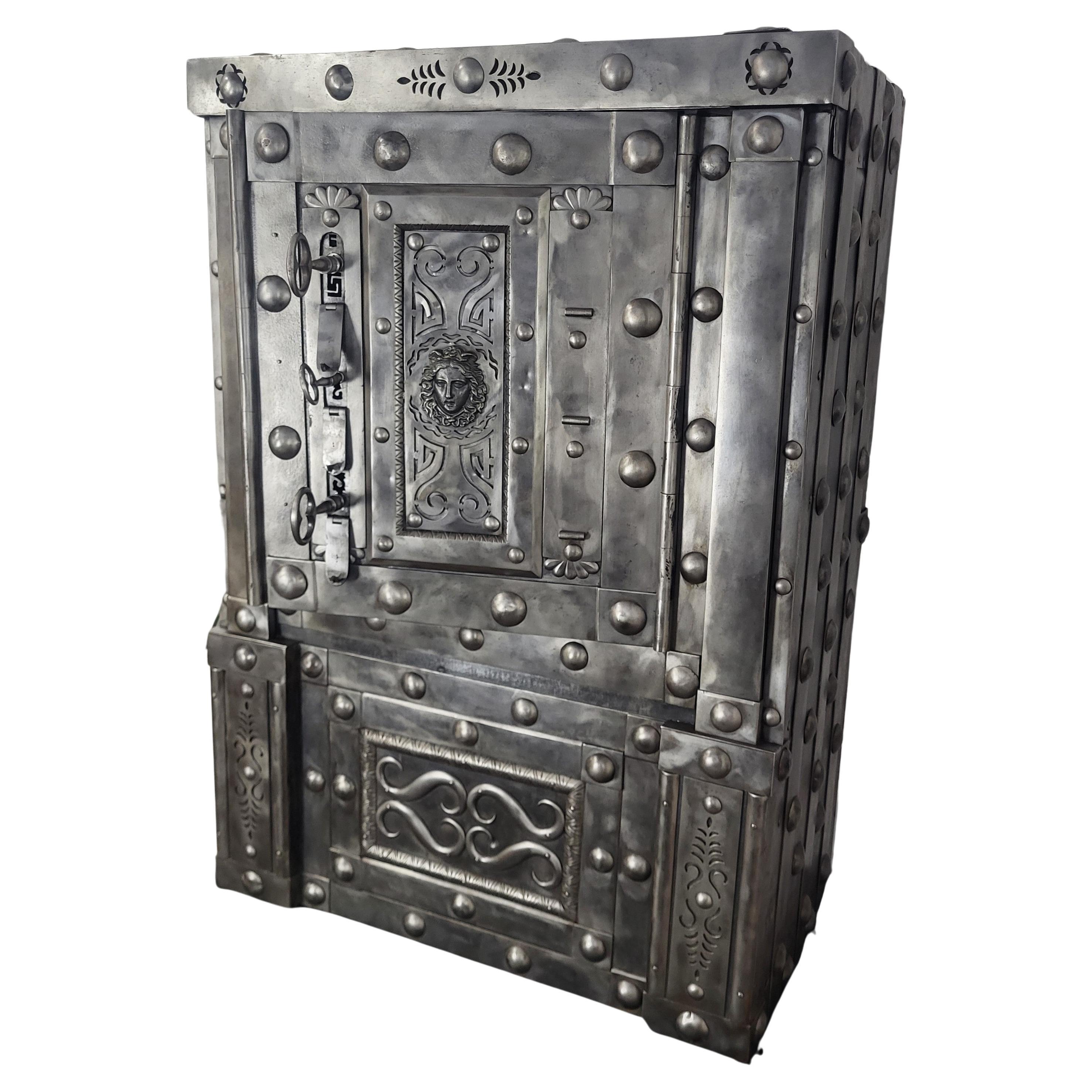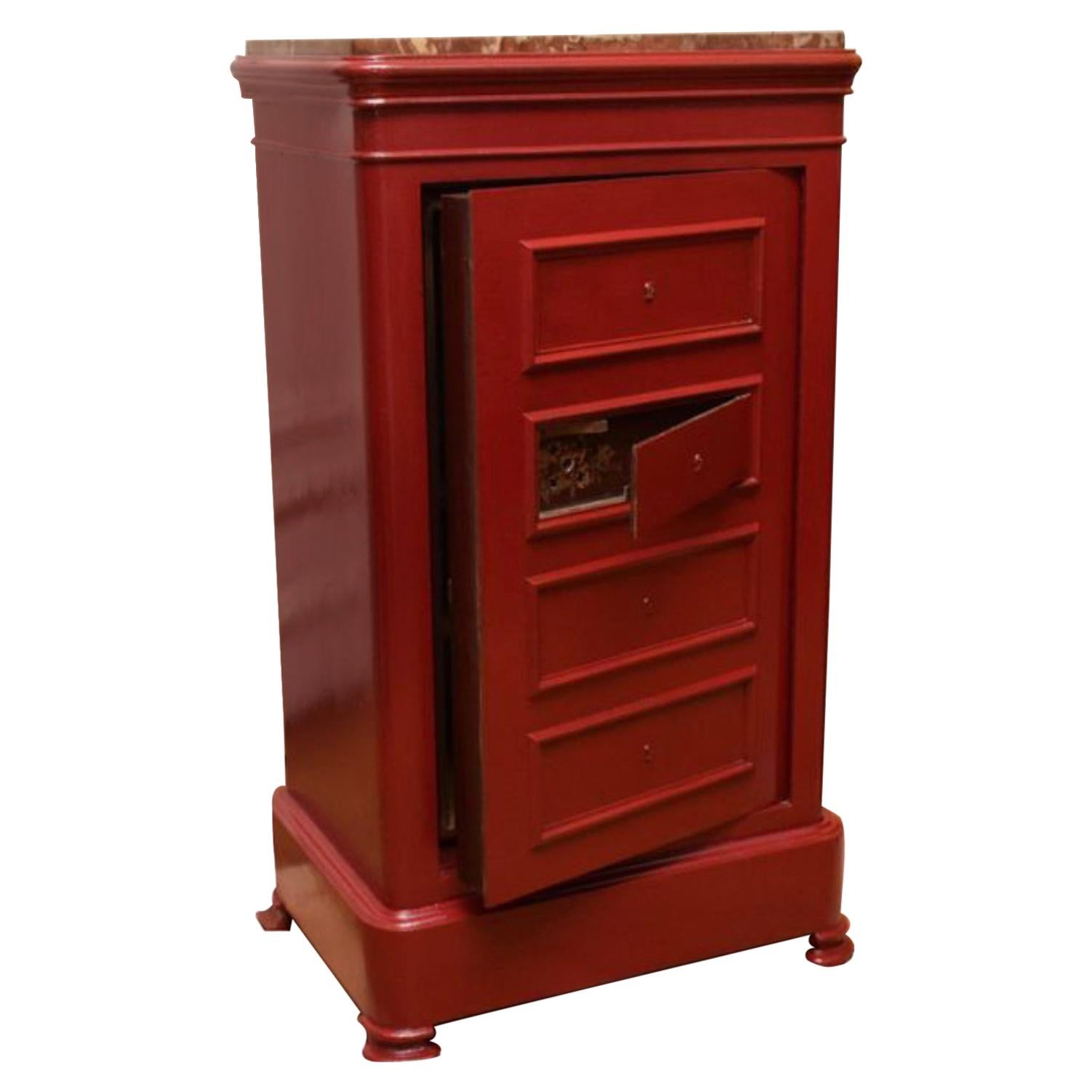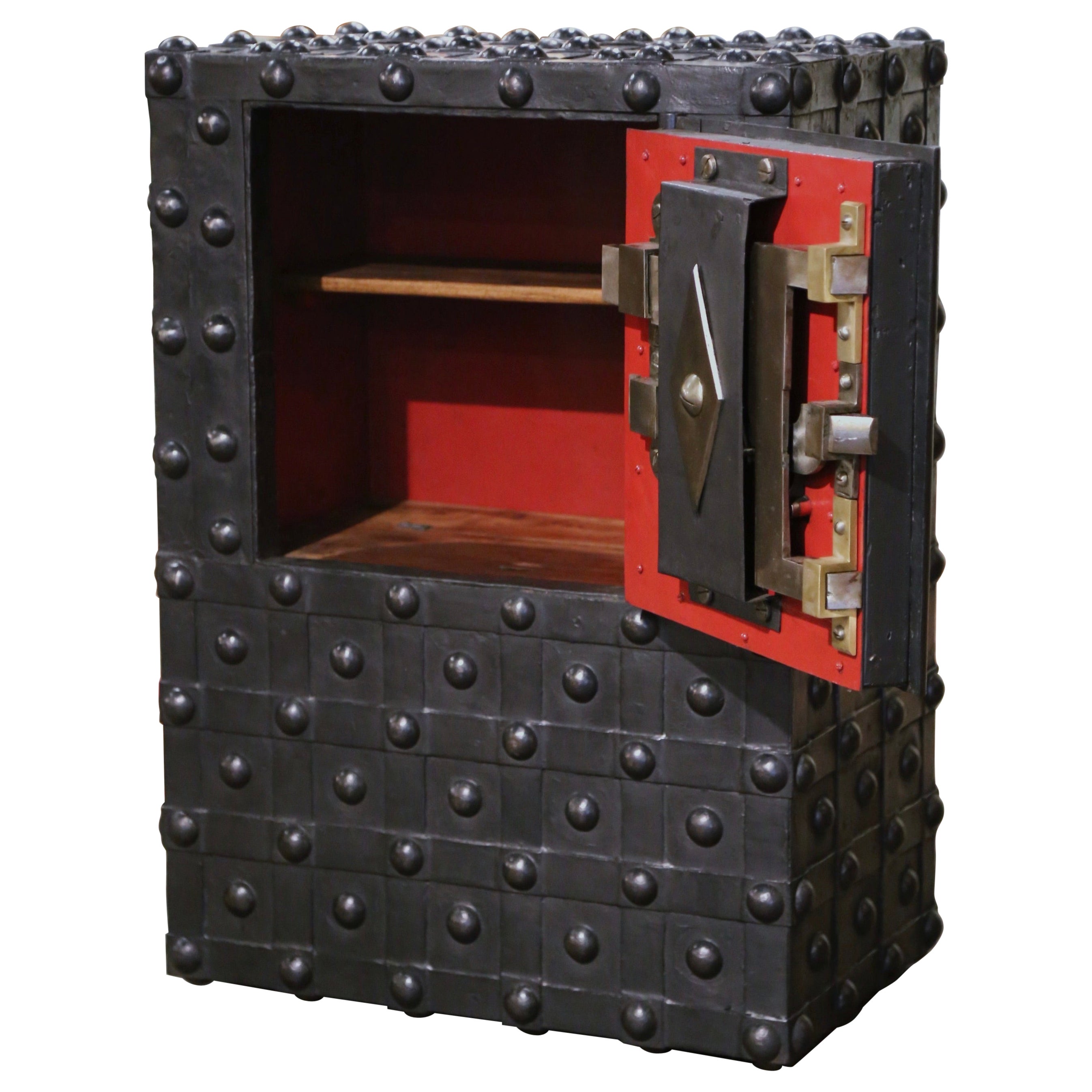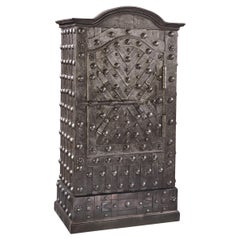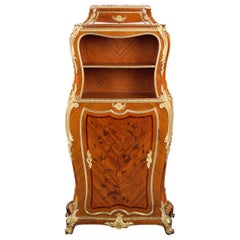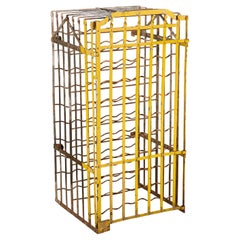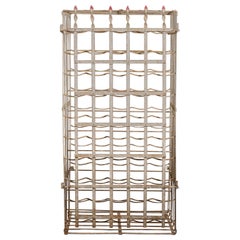
French Iron Floor Safe
View Similar Items
Want more images or videos?
Request additional images or videos from the seller
1 of 9
French Iron Floor Safe
About the Item
- Dimensions:Height: 48.5 in (123.19 cm)Width: 33.5 in (85.09 cm)Depth: 23.75 in (60.33 cm)
- Style:Baroque (In the Style Of)
- Materials and Techniques:
- Place of Origin:
- Period:
- Date of Manufacture:circa 1830
- Condition:Refinished. Routine Maintenance and upkeep.
- Seller Location:New Orleans, LA
- Reference Number:Seller: 31-19271stDibs: LU891122598582
About the Seller
5.0
Recognized Seller
These prestigious sellers are industry leaders and represent the highest echelon for item quality and design.
Established in 1912
1stDibs seller since 2010
93 sales on 1stDibs
Typical response time: 7 hours
More From This SellerView All
- Italian Baroque Iron SafeLocated in New Orleans, LAVisually imposing and mechanically complex, this formidable Italian Baroque safe would have provided unparalleled security for storing valuables in the 18th century. The hobnail motifs covering the safe are a testament to the fine artistry and craftsmanship of Piedmont metalworkers of this time. Beautifully restored and fully functional, this iron safe...Category
Antique 18th Century Italian Baroque Cabinets
MaterialsIron
$124,500 - Louis XIV Inspired French Linen PressLocated in New Orleans, LAEnveloped in sumptuous parquetry and doré bronze, this majestic Louis XIV inspired French linen press displays the characteristics of superior craftsmanship and luxurious design seen in the creations of the iconic Françios Linke. Crafted of sumptuous kingwood, the glorious parquetry door opens to reveal six compartments used to store linens, such as those for the bedroom or even the dining table. The masterful woodwork is flawlessly balanced by intricate doré bronze mounts in the form of Neoclassical floral swags, garlands, plumes and acanthus scrolls. The delicately spiraled doré bronze feet give the cabinet a sense of lightness and balance. Enhanced by a beautiful rouge marble top, this elegant linen press is an excellent example of late 19th century French furniture...Category
Antique 19th Century French Louis XIV Linen Presses
MaterialsBronze
- 19th Century French Secrétaire by DurandBy Gervais DurandLocated in New Orleans, LASuperior craftsmanship and intricate marquetry characterize this rare secrétaire by Gervais-Maximilien-Eugène Durand, one of the most popular French ébénistes of the 19th century. Th...Category
Antique 19th Century French Louis XV Secretaires
MaterialsBronze, Ormolu
- 19th Century French Vitrine by Francois LinkeBy François LinkeLocated in New Orleans, LAThis rare and stunning vitrine was crafted by the illustrious French ébéniste François Linke. A master of the Louis XVI style, Linke was renowned for his highly original designs t...Category
Antique 19th Century French Rococo Vitrines
MaterialsBronze
- 19th Century Watch Winding Display CabinetLocated in New Orleans, LAThis incredible, one-of-a-kind watch display cabinet brings together the beauty of an antique with the functionality of modern technology. Crafted of mahogany, this 19th century jewelry display cabinet...Category
Antique 19th Century Unknown Empire Cabinets
MaterialsMahogany
- King George I Ambassadorial Secrétaire-CabinetLocated in New Orleans, LAThis highly important secrétaire-cabinet was crafted for and specially ordered by King George I for the British Ambassador to Russia. From its craftsmanship and materials to its exceptional artistry, it is a work of royal and historic significance that exudes power in each and every detail. The broken pediment at its apex features the simplified royal coat of arms bearing the king’s crown, while the interior is adorned by portraits of the British Royal Family. Placed within the ambassador’s St. Petersburg home, this entirely unique piece of furniture would have been a potent reminder of England's grandeur and political importance. Relations between England and Russia during this period were at an all-time high. Peter the Great had traveled to England in 1698 as part of his widely known “Grand Embassy” tour, wherein he attempted to gain foreign support against the Ottoman Empire. He spent a period of nearly four months there, meeting with King William III and his court on numerous occasions. Noted academic Arthur MacGregor wrote concerning the impact of the trip, “For two decades following Peter's visit, British influence in Russia reached a peak. It manifested itself in social custom, in craft practice and in ships and naval organization... it reached a significant sector of the population before relations cooled once again and the two nations pulled back from this era of unprecedented cordiality.” First and foremost, however, it is a reminder of British might and influence. By the reign of King George I, England had come into its own as a world power. Unique in its design, this cabinet is a reflection of the country’s might. It is crafted from the highest-quality solid walnut and burr walnut adorned by gilded lock plates and engraved hinges. The presence of ormolu at its apex and lining the doors was a rarity for this period, and its addition makes manifest the importance of the design. The outer doors open to reveal multiple interiors, including fifteen separate drawers around a central cupboard; the cupboard doors each bear mezzotint portraits of George I and his father, Ernest Augustus, Elector of Hanover. An etching after the portrait of George I dating to circa 1716 is in London’s Royal Academy. A second, inner pair of doors are adorned by mezzotints of the Prince and Princess of Wales (later Queen Caroline and George II), which are both after portraits by Sir Godfrey Kneller dated 1716 in the Royal Collection. A final portrait is revealed on the very interior of the cabinet, where a mezzotint of Frederick, Anne, Amelia and Caroline, children of the Prince of Wales, resides. An etching (circa 1715-1720) after this portrait can be found in the National Portrait Gallery (London). Apart from its abundance of royal portraiture, the cabinet features stunning painted decoration, including floral designs as well as clouds, birds and trees in a bucolic motif reminiscent of Eden. Its lower portion is a study in both form and function, featuring a fitted secrétaire-drawer above three additional drawers for storage. The cabinet appears in The Shorter Dictionary of English Furniture by R. Edwards from 1964, a text that is regarded as the bible of British furniture design. Edwards describes it as a “writing cabinet...given by George I to the British Ambassador at the Russian court.” The cabinet was likely made for the 18th-century German diplomat and writer Friedrich Christian Weber, who represented English interests at the Russian court from 1714 until 1719. Although Weber’s tenure as ambassador was relatively short, while in St. Petersburg, he authored his account entitled Das veraenderte Russland (The Present State of Russia), which was published in three volumes in 1721, 1739 and 1740. It may, however, also have been made for George Douglas, 2nd Earl of Dumbarton, who served as ambassador alongside Weber in 1716. Diplomatic relations ceased between the two countries in 1721. In 1928, the cabinet appeared for sale at the International Exhibition of Antiques & Works of Art in Olympia. It had previously been in the collection of the Woltner family of Bordeaux, the celebrated vintners who owned the estate Château Laville Haut-Brion and produced wine of the same name. According to the family, Monsieur Woltner was given the cabinet as a gift from an aunt who lived in Russia for many years. After leaving the Woltner collection, the cabinet was acquired by William Berry...Category
Antique 18th Century English Georgian Secretaires
MaterialsBrass
You May Also Like
- Wrought Iron Wine SafeLocated in Chicago, ILWrought iron multi bottle wine safe. For wall or floor.Category
Vintage 1930s Argentine Dry Bars
MaterialsWrought Iron
$1,250 - Wrought Iron Wine SafeLocated in Chicago, ILWrought iron multi bottle wine safe. Hangs on wall or sits on floor.Category
Vintage 1930s Argentine Cabinets
MaterialsWrought Iron
$1,250 - Wrought Iron Wine SafeLocated in Chicago, ILWrought iron multi bottle wine safe. Hangs on wall or sits on floor.Category
Vintage 1930s Argentine Cupboards
MaterialsWrought Iron
$1,350 - 18th Century Studded Safe, FranceLocated in Pittsburgh, PAAntique Hand-Made French Studded Safe with Original Hardware and Key. France, circa 1740. Heavy in weight and pre-French Revolution private safe from Mar...Category
Antique 1740s French Baroque Cabinets
MaterialsIron
- 18th Century Black French Iron Safe, Antique Cassa ForteLocated in West Palm Beach, FLA large, antique single-door safe or cassa forte made of hand crafted iron with rivets and bands on the surface and palmettes and rocaille decorations on the front, in good condition...Category
Antique Mid-18th Century French Cabinets
MaterialsMetal, Iron
- 18th Century Wrought Iron Italian Hobnail Antique Safe Strong Box CabinetLocated in Carimate, ComoBeautiful and rare example of late 18th century Italian master blacksmith craftsmanship, this antique studded safe with typical all-around hobnails and great wrought iron details, is...Category
Antique Late 18th Century Italian Baroque Cabinets
MaterialsMetal, Wrought Iron
Recently Viewed
View AllMore Ways To Browse
Rivet Case
Riveted Cabinet
Rivet Cabinet
Antique Cast Iron Keys
Antique Childs Iron
Hidden Safe
Hidden Safe Furniture
Baroque Safe
Iron Exterior Doors
Antique Cast Iron Decorative Pieces
Keyhole Cover
Hidden Drinks
Antique Cast Iron Lions Head
Baroque Drinks
Antique Cast Iron Safe
Ionic Order
Antique Keyhole Cover
Antique Cast Iron Door Lock
